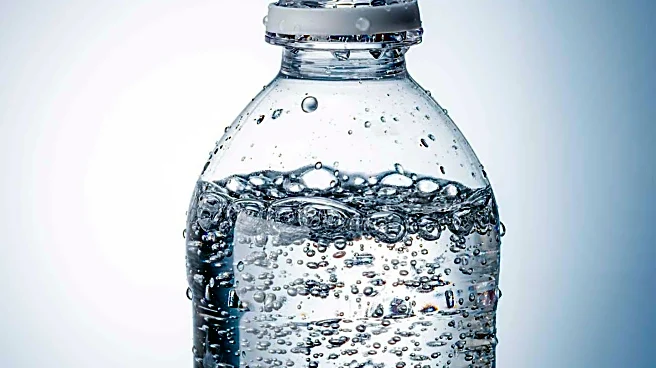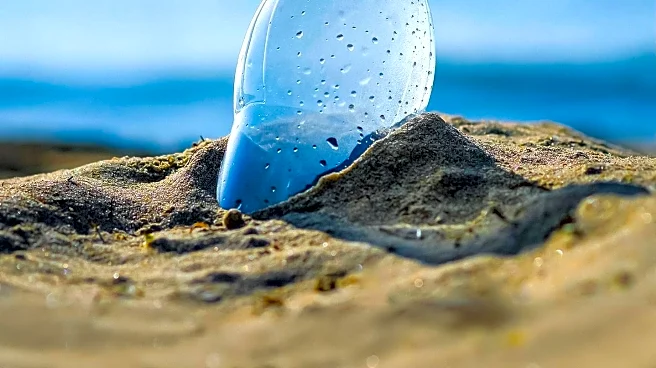What's Happening?
Recent research has revealed that bottled water may contain microplastics, posing significant health risks. The study, led by Sarah Sajedi, highlights that individuals ingest between 39,000 and 52,000 microplastic particles annually, with bottled water consumers ingesting 90,000 more particles than those who drink tap water. These microplastics, often invisible to the naked eye, can enter the bloodstream and reach vital organs, potentially causing chronic inflammation, hormonal disruption, and neurological damage. The research underscores the need for more comprehensive studies to understand the long-term effects of microplastic ingestion.
Why It's Important?
The findings are crucial as they challenge the perception of bottled water as a pure and safe alternative to tap water. The presence of microplastics in bottled water could have widespread health implications, affecting millions of consumers who rely on bottled water for daily hydration. This research may prompt regulatory bodies to reconsider standards for bottled water production and encourage consumers to opt for more sustainable and safer hydration options. The study also highlights the need for increased public awareness and education on the potential health risks associated with microplastic consumption.
What's Next?
The research may lead to increased scrutiny of bottled water production processes and the materials used in packaging. Policymakers could consider implementing stricter regulations to limit microplastic contamination in bottled water. Additionally, there may be a push for more sustainable packaging solutions and increased investment in research to develop methods for detecting and reducing microplastic presence in consumer products. Public health campaigns could be launched to educate consumers about the risks of microplastics and promote alternatives to bottled water.
Beyond the Headlines
The study raises ethical questions about consumer safety and corporate responsibility in the bottled water industry. It also highlights the environmental impact of plastic waste, as microplastics contribute to pollution and ecological harm. The findings could drive cultural shifts towards more sustainable consumption practices and increased demand for transparency in product labeling and safety standards.










